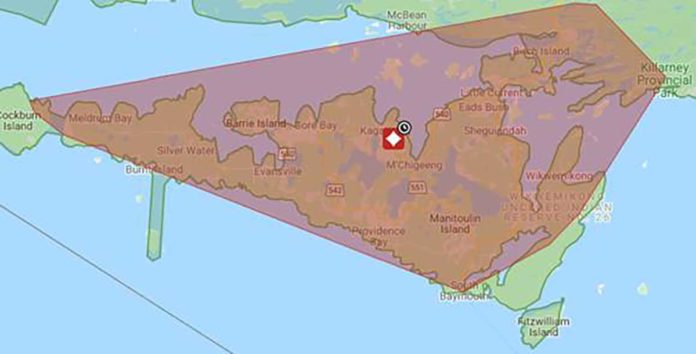SANDFIELD – Proving its popularity in the past and the present, a book detailing the history of the community of Sandfield has been reprinted for a third time. ‘Sandfield (originally Sandfield Mills) History Passes, But Memories Live Forever’ has just recently been re-released.
“This book was originally printed in 2010, and we still keep getting people asking for the book,” said Mary Lou Lochead, of Sandfield. The book was originally published in 2010, as a project of the S.S. No. 1 Manitou Merrymakers, with the assistance of funding, which was provided by the Lacloche-Manitoulin Business Assistance Corporation (LAMBAC).
“We decided that we needed to do another printing of the book and had 100 copies made, some of which have had already been spoken for,” Ms. Lochead told The Expositor. “The main reason I wanted to have the book written in the first place was to recount and save the history of the community, and to provide people an understanding of what life for the pioneers of the community was like and what they went through.”
Ms. Lochead pointed out, for instance, at one time in Sandfield the community, “had three mills, a sawmill, grist mill and a wool mill.”
“Since the formation of the S.S. No. 1 Merrymakers Group in 1989, there has been a desire to record the early history of Sandfield Village and surrounding area. Fortunately for us, the Sandfield Women’s Institute had, for many years, collected newspaper clippings and other articles pertaining to local happenings and were willing to share that material with us. Many other people gave us information that they had saved, or they had sought out from others with whom they were acquainted,” Ms. Lochead explained in the acknowledgements at the front section of the book.
“The Women’s Institute had a Tweedsmuir book and asked everyone to provide the history of their area,” said Ms. Lochead. “I wrote about houses built before 1900 that are still used in the community. There are a few left, and we provided the history of the houses and who has lived in them, including the original residents to those who live in the homes now, along with photographs.”
“The information for this book has been gleaned from the writings of several people, from newspaper reports and from history books,” wrote Ms. Lochead. “Where the source is known, we have recorded it. To the best of our ability, we have cross-referenced this material with other people and with other written sources, in order to produce an accurate account. As with all recordings of past history, there will be errors and we apologize for them. Our intent is to acquaint ourselves and those who follow, with the difficulties the pioneers, our ancestors, faced and how they survived because of their faith, courage and hard work.”
“This desire has been the motivation to spur us on to publish a book containing the history of Sandfield and surrounding area, zeroing in on what life was like for a pioneer family,” wrote Ms. Lochead. “It makes you appreciate what you have now, more.”
“Because of my computer literacy, I was about to give up on the idea and be content with the material we had already collected. Then, I met Norma Hughson and Marilyn Irish, both with a great deal of knowledge of our Island. Norma is great with her scanner and camera and Marilyn is a wonderful recorder of history. They have worked, tirelessly, to encourage me and provide the expertise I need.”
“It was great also, when information was sketchy, to be able to call on Dot Watson and others for their input and knowledge,” said Ms. Lochead.
“It was Norma that said ‘we’re going to put a history book together’,” said Ms. Lochead. “We had a digital copy of the (original) book but some things were missing so we revised it and put in what was missing, with my daughter working on the computer and with Norma’s help, and the book was printed by O.J. Graphix in Espanola.”
The book contains 205 pages, and has many, many pictures, including for example the Sandfield Village, and many sections including poems, pioneer living, a history of Sandfield and early days in Sandfield township, Lake Manitou ferries and workboats, early education and school day memories from some of its residents, pioneer faming, fairs at Sandfield, early health care, church services, the Royal Mail and the Manitowaning Stage, the blacksmith shop, Lake Manitou Fish Co. and Fish hatchery, construction and operation of the bass ponds, large fish caught in Lake Manitou, Hutchinson’s Cabins, Watson’s Camp, the Women’s Institute, stories on Manitoulin’s Centennial, the S.S. No. 1 Merrymakers, home and cottages built before 1915, local veterans and much, much more.
The book can be purchased at Williamson’s in Mindemoya, from Sharon Watson (705-859-3375), and from The Manitoulin Expositor bookshop (705-368-2744) for $30 plus taxes.





